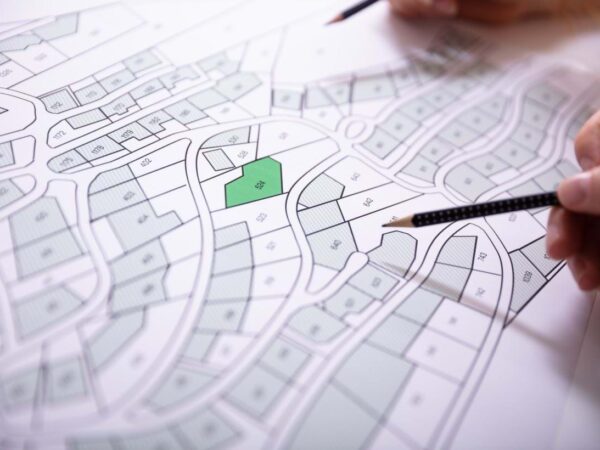When planning a major home improvement project in East London, such as a bespoke house extension or a custom loft conversion, every project must comply with strict building control requirements. Complying with building regulations is not just a legal requirement across boroughs like Waltham Forest and Redbridge; it’s a crucial step in safeguarding the occupants and the broader community. It ensures that construction projects are executed to a high standard, minimizing the risk of accidents, and enhancing the overall quality and value of your property. For home owners, architects, and builders in the area, understanding and adhering to these regulations is fundamental to the successful completion of projects, avoiding costly penalties, and ensuring that buildings are safe and comfortable for their intended use.
In this comprehensive guide for East London homeowners, we explore the building regulations process, starting with the selection of your building inspector, obtaining crucial building control approval, conducting necessary inspections during construction, and concluding with the issuance of a final completion certificate. You will learn about the importance and intricacies of each stage.

On this page
What Are the Key Building Regulations for an East London Project?
Building Regulations are the UK’s mandatory building standards that ensure the safety, structural stability, and health of occupants inside or nearby buildings. These regulations are separate and distinct from Planning Permission. While Planning Permission focuses on the aesthetics, size, and external impact of a development (like your extension’s appearance or impact on neighbours), Building Regulations approval deals specifically with the technical and constructional details of the work.
These technical building standards include a collection of Approved Documents that detail the technical specifications for construction projects, from materials and structural integrity to drainage and energy efficiency. The most critical of these relevant to domestic home improvements in East London include:
- Part A – Structure;
- Part B – Fire safety;
- Part E – Resistance to the passage of sound;
- Part F – Ventilation;
- Part G – Sanitation, hot water safety and water efficiency;
- Part H – Drainage and waste disposal;
- Part K – Protection from falling, collision and impact;
- Part P – Electrical safety;
- Regulation 7 – Materials and workmanship.
In essence, Building Regulations focus entirely on the structural, fire safety, and technical construction aspects of your project to guarantee the health and safety of individuals in and around the structure. The three main steps in securing building control approval are: 1) choosing who will carry out the inspections; 2) submitting the formal building regulations application; and 3) ensuring that the works being carried out comply with the requirements.

Step 1: Local Authority Building Control (LABC) vs. Approved Inspector
When choosing the right building control inspector for your East London house extension or loft conversion, you face two main options: Local Authority Building Control (LABC) and private building control, also known as Approved Inspectors. Both options provide suitably qualified professionals, often accredited by reputable institutions like the Royal Institute of Chartered Surveyors (RICS) or the Chartered Institute of Building Engineers (CIBE). Their expertise and the scope of their responsibilities—including plan checks and crucial onsite inspections to ensure compliance—are comparable.
However, the choice between a Local Authority inspector and a private inspector involves several considerations that impact your project’s costs and timeline. Local inspectors, operating as part of a non-profit government body, often present a more cost-effective solution compared to their private counterparts, who operate for profit and may charge significantly higher fees. While some homeowners assume private inspectors are more responsive, our experience shows that LABC inspectors often have the advantage of proximity within the borough, allowing them to conduct essential inspections with shorter notice—a crucial factor in minimizing costly project delays.
Furthermore, while it’s common to think that Approved Inspectors provide the only consistent single point of contact, our practical experience with Waltham Forest and Redbridge councils shows that local authority inspectors in these areas frequently assign a single inspector to oversee a project from start to finish. This practice ensures that the personal interaction and continuity often promoted by private inspectors are equally matched by your local council, making the distinction between the two services less significant for homeowners in East London.
Step 2: Submitting Your Building Regulations Application (Full Plans vs. Building Notice)
Your architect is responsible for creating the detailed Building Regulations application drawings, which must adhere to the technical requirements specified in the Approved Documents. It’s crucial to distinguish that Building Regulations approval differs fundamentally from Planning Permission; they are two separate legislative requirements. Depending on your project in East London, whether it’s a new loft conversion east london project or an extension,, you might need both, just one, or possibly neither.
For the Building Regulations application, you will need a highly detailed set of technical drawings. These drawings go significantly beyond the scope of basic planning drawings—they include construction techniques, detailed cross-sections, annotations, dimensions, and the structural engineer’s calculations and specifications. This comprehensive documentation proves that your project complies with all applicable Building Regulations. In sharp contrast, basic planning drawings focus on visual aspects like the design’s appearance and proposed materials for the local planning department. There are two primary ways to file your application with your local building control authority:
- Full Plans Application (Recommended): This method involves submitting comprehensive plans, specifications, and detailed calculations covering structure, thermal performance, and water usage. The building control team reviews and formally ‘approves’ these plans before any construction begins. Opting for the Full Plans application minimizes the significant risk of violating regulations on site and helps prevent expensive setbacks.
- Building Notice: With this option, no detailed plans are submitted in advance. The application is deemed ‘accepted’ once it’s confirmed that the building regulations have been satisfied during the construction process. It’s important to note that this method introduces a higher risk that any work done may later require costly modifications or enhancements to comply with the required standards.
For those seeking maximum certainty and wishing to mitigate on-site risks, the Full Plans application is the preferred method and offers the greatest peace of mind. Once your plans and structural calculations are thoroughly reviewed and approved, you can confidently obtain accurate quotes and select contractors, secure in the knowledge that your project aligns with an approved plan.
If your project is in Waltham Forest, you may want to check this guide – LONDON BOROUGH OF WALTHAM FOREST BUILDING REGULATIONS CHARGING SCHEME

Step 3: Critical Building Control Inspection Stages Explained
The process of ensuring that your East London project complies with building regulations involves a series of critical inspection stages. These necessary inspections are carried out by a building control officer to verify that the work being done adheres precisely to the approved plans and meets all mandatory standards. Understanding these stages can help you and your builder prepare for a much smoother, faster process. Here is the list of the mandatory building control inspection stages:
- Foundation Inspection: Before any concrete is poured, an essential inspection of the excavation work is conducted. This verifies that the foundations are correctly positioned and have the appropriate depth and width to support the new structure.
- Damp Proofing & Drainage: Following the foundation work, this stage checks the damp proofing measures to protect the building from moisture. It includes inspecting the installation of the damp proof course (DPC) and membrane, as well as the initial drainage system.
- Structural Elements: This crucial stage involves the inspection of structural components, such as steel beams, supporting walls, and timber frames, to ensure they are installed correctly and align precisely with the structural engineer’s calculations.
- Insulation and Ventilation: Ensuring that all insulation and ventilation meet the required standards is vital for energy efficiency and preventing moisture build-up. This stage examines the installed insulation materials and the functionality of ventilation systems.
- Fire Safety Measures: Inspectors will verify that all fire safety measures—including escape routes, fire-resistant materials, and the placement of smoke alarms—are correctly in place and fully meet the latest regulations.
- Final Inspection & Completion Certificate: Once all construction work is entirely finished, the Final Inspection is carried out. This comprehensive review ensures the project complies with all applicable building regulations. Upon passing this final check, a Completion Certificate is issued, officially confirming the work meets the required legal standards.
Each of these checks is integral to the overall building control process. Coordination with your building control inspector is vital: it’s best to assign the task of scheduling visits to your builders. Timing the inspector’s visits accurately is extremely crucial; should they miss a critical phase, such as the pouring of foundation concrete, they might legally require your contractor to create an opening in your newly laid floor to inspect the footings.

Frequently Asked Questions About Building Regulations
Even after reviewing our comprehensive guide, certain project-specific or procedural questions often remain. Below, we address the most frequently asked questions that homeowners in East London have regarding Building Regulations approval and compliance, offering quick and definitive answers to help you navigate your next step.
What is the main difference between Planning Permission and Building Regulations?
Planning Permission is about visual appearance and external impact (the local planning department). Building Regulations are about technical compliance, safety, and construction standards (the building control inspector).
How long does Building Regulations approval take to get in East London?
If you submit a Full Plans Application, the local authority building control (like Waltham Forest or Redbridge) typically has 5-8 weeks to issue a decision. A Building Notice is quicker to submit but approval only happens upon final inspection.
When do I need to notify Building Control about my home improvement project?
Legally you’re required to notify when building work is any of these: a) the construction or extension of a building; b) any modification made to a building; c) a significant change in the building’s use. For internal modifications, such as reconfiguring the layout — even if these changes are not structural — it’s wise to consult the local authority’s building control office. This is particularly important for aspects like fire safety, where changes might necessitate additional measures like extra fire doors. Routine minor repairs, such as like-for-like replacements, usually do not require formal approval. However, if there’s any uncertainty, it’s best to reach out to your local authority’s building control office for guidance.
Do I need Building Control for internal alterations, like removing a wall?
IYes, if the wall is load-bearing or if the alteration affects fire safety (e.g., changes an escape route or ventilation). You must always check with your Approved Inspector or LABC before starting any structural changes.
What are the penalties for failing to comply with Building Regulations?
The penalties are significant and can include legal prosecution and fines. Crucially, non-compliant work will require you to apply for a Regularisation Certificate (known as Retrospective Building Regulations). If approved, this process often involves invasive inspections and costly corrective work, and without it, you will face severe difficulties when trying to sell your property.
What is a Regularisation Certificate, and when would I need one?
IA Regularisation Certificate is the formal approval given for work that was completed without prior Building Regulations approval. The process can involve opening up floors or walls for inspection and is significantly more stressful and costly than applying beforehand.
Does the Building Control Final Inspection cover the electrical and gas work?
IThe Building Control Final Inspection checks that the installation is safe, but typically your electrician must provide a separate Part P certificate (or equivalent) and gas engineers must be Gas Safe registered. The final Completion Certificate often requires these other trade certifications.
Can my contractor sign off on the Building Regulations themselves?
No. Only an officially appointed Local Authority Building Control (LABC) officer or an Approved Inspector can legally sign off on the work. Your contractor coordinates the inspections, but they cannot issue the final Completion Certificate.

Tailored Lofts, a trusted East London building company, is your dedicated partner for bespoke home improvement projects. From the moment you envision a high-quality house extension or a custom loft conversion in East London, our expert team is by your side. We specialize in simplifying the complexities of planning and building regulations, ensuring a smooth journey from concept to completion. Our combination of experienced architects and skilled builders guarantees that your project not only aligns with but surpasses all required building control standards, delivering outcomes that exceed your expectations in areas like Waltham Forest and Redbridge.
If you’ve obtained Planning Permission and are now seeking skilled guidance for the next building regulations steps, or if you’re searching for a reliable team to bring your entire loft conversion or house extension project from concept to reality, contact us today. We offer a seamless and stress-free process that will bring your ideas to life.



